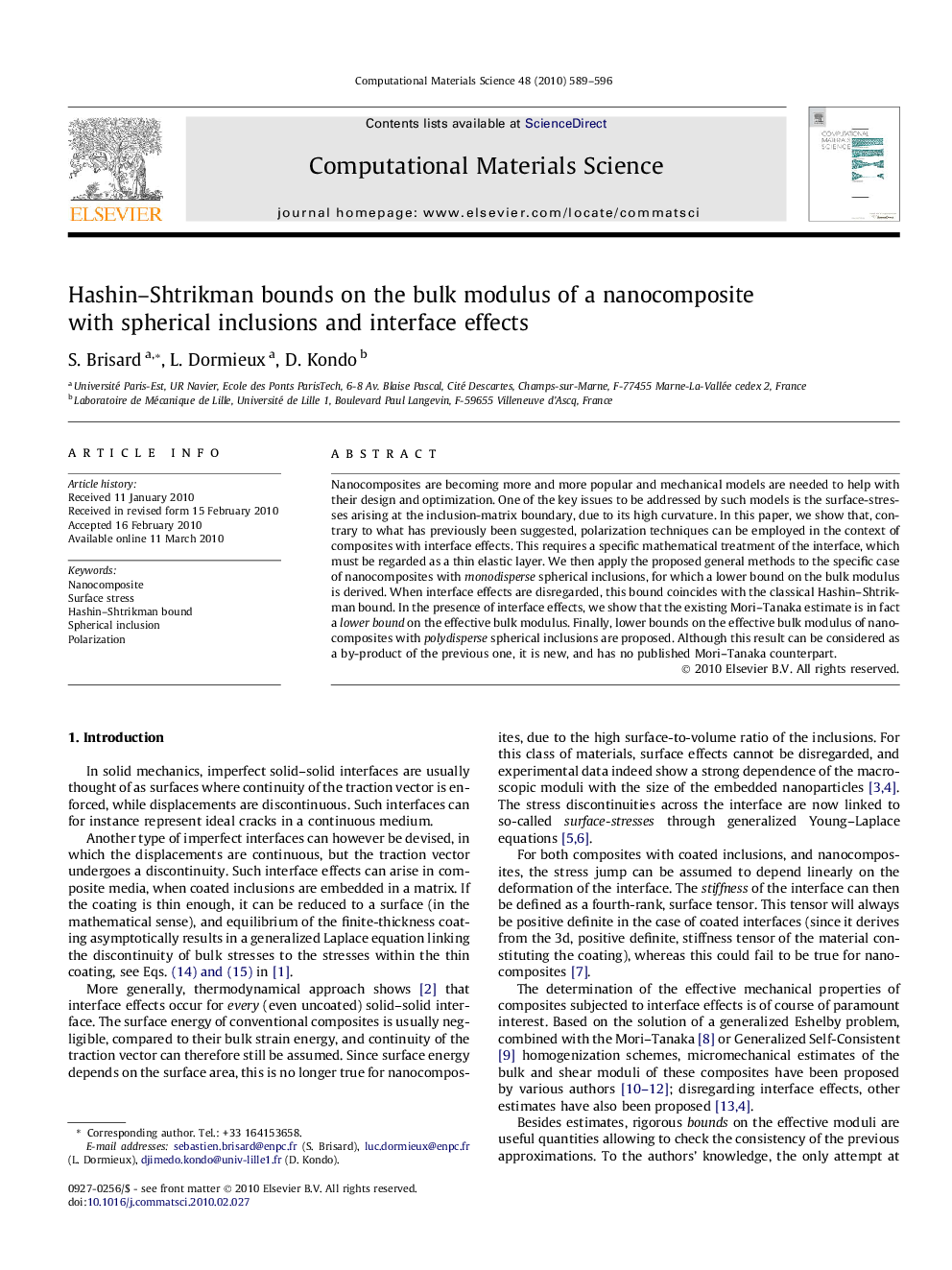| Article ID | Journal | Published Year | Pages | File Type |
|---|---|---|---|---|
| 1562636 | Computational Materials Science | 2010 | 8 Pages |
Nanocomposites are becoming more and more popular and mechanical models are needed to help with their design and optimization. One of the key issues to be addressed by such models is the surface-stresses arising at the inclusion-matrix boundary, due to its high curvature. In this paper, we show that, contrary to what has previously been suggested, polarization techniques can be employed in the context of composites with interface effects. This requires a specific mathematical treatment of the interface, which must be regarded as a thin elastic layer. We then apply the proposed general methods to the specific case of nanocomposites with monodisperse spherical inclusions, for which a lower bound on the bulk modulus is derived. When interface effects are disregarded, this bound coincides with the classical Hashin–Shtrikman bound. In the presence of interface effects, we show that the existing Mori–Tanaka estimate is in fact a lower bound on the effective bulk modulus. Finally, lower bounds on the effective bulk modulus of nanocomposites with polydisperse spherical inclusions are proposed. Although this result can be considered as a by-product of the previous one, it is new, and has no published Mori–Tanaka counterpart.
